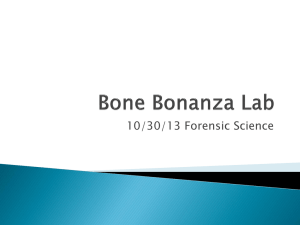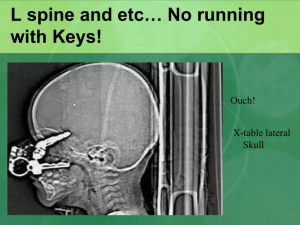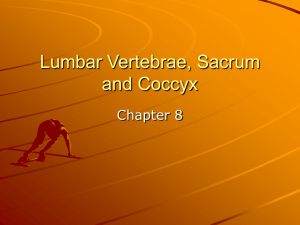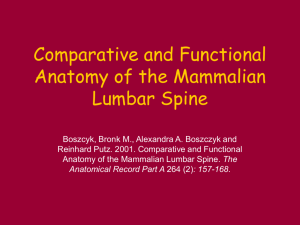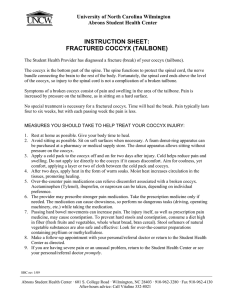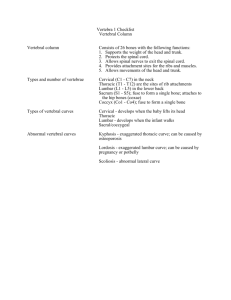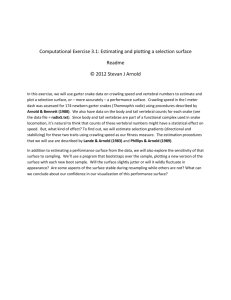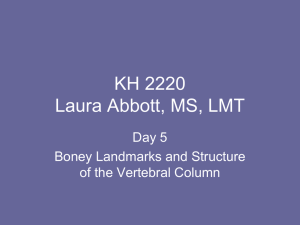Film Critique of the Lumbar Spine, Sacrum and Coccyx
advertisement
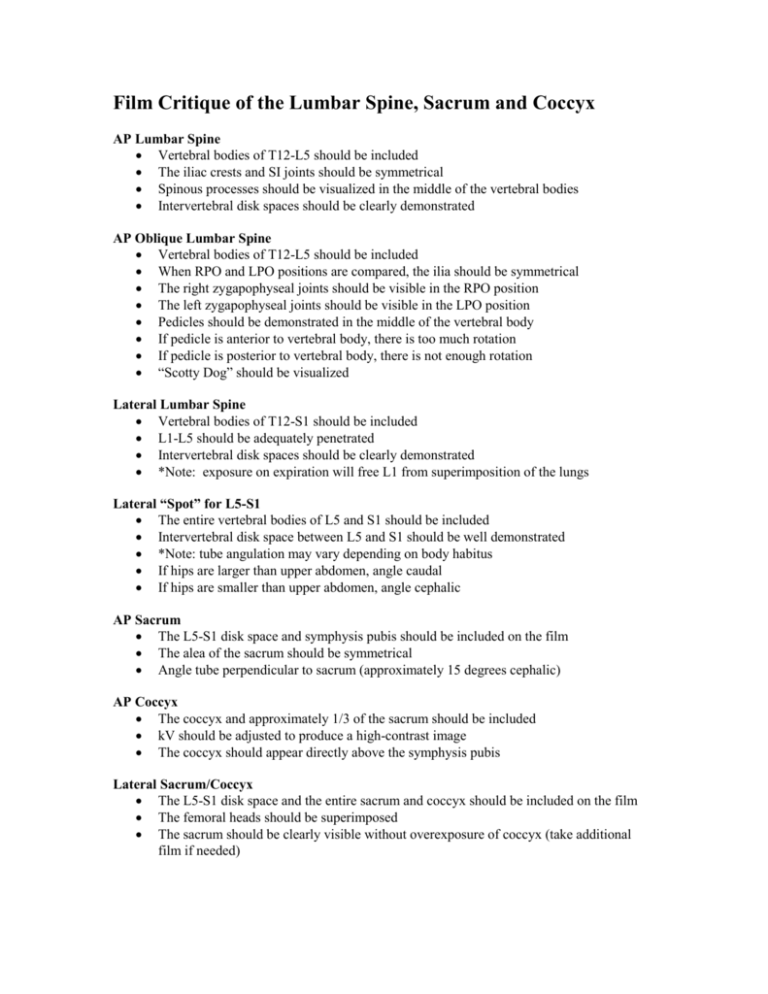
Film Critique of the Lumbar Spine, Sacrum and Coccyx AP Lumbar Spine Vertebral bodies of T12-L5 should be included The iliac crests and SI joints should be symmetrical Spinous processes should be visualized in the middle of the vertebral bodies Intervertebral disk spaces should be clearly demonstrated AP Oblique Lumbar Spine Vertebral bodies of T12-L5 should be included When RPO and LPO positions are compared, the ilia should be symmetrical The right zygapophyseal joints should be visible in the RPO position The left zygapophyseal joints should be visible in the LPO position Pedicles should be demonstrated in the middle of the vertebral body If pedicle is anterior to vertebral body, there is too much rotation If pedicle is posterior to vertebral body, there is not enough rotation “Scotty Dog” should be visualized Lateral Lumbar Spine Vertebral bodies of T12-S1 should be included L1-L5 should be adequately penetrated Intervertebral disk spaces should be clearly demonstrated *Note: exposure on expiration will free L1 from superimposition of the lungs Lateral “Spot” for L5-S1 The entire vertebral bodies of L5 and S1 should be included Intervertebral disk space between L5 and S1 should be well demonstrated *Note: tube angulation may vary depending on body habitus If hips are larger than upper abdomen, angle caudal If hips are smaller than upper abdomen, angle cephalic AP Sacrum The L5-S1 disk space and symphysis pubis should be included on the film The alea of the sacrum should be symmetrical Angle tube perpendicular to sacrum (approximately 15 degrees cephalic) AP Coccyx The coccyx and approximately 1/3 of the sacrum should be included kV should be adjusted to produce a high-contrast image The coccyx should appear directly above the symphysis pubis Lateral Sacrum/Coccyx The L5-S1 disk space and the entire sacrum and coccyx should be included on the film The femoral heads should be superimposed The sacrum should be clearly visible without overexposure of coccyx (take additional film if needed)
